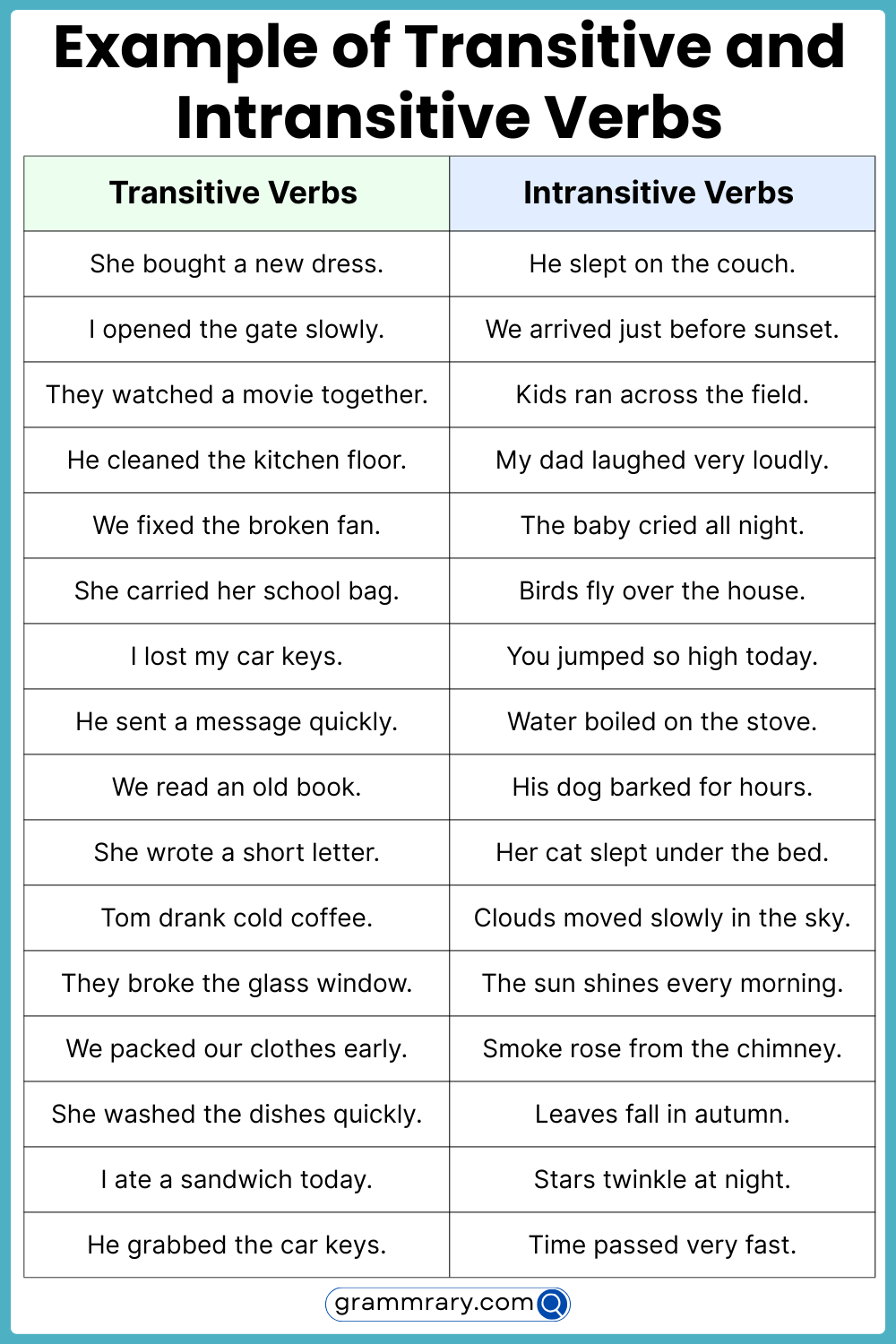Verbs are an essential part of speech in the English language. They are used to indicate actions, occurrences, or states of being. One important distinction to understand when it comes to verbs is the difference between transitive and intransitive verbs.
Transitive verbs require a direct object to complete their meaning, while intransitive verbs do not. Knowing the difference between these two types of verbs can help you communicate more effectively in writing and speaking.
List of Transitive and Intransitive Verbs
Transitive Verbs:
- eat
- write
- paint
- read
- carry
Intransitive Verbs:
- run
- sleep
- arrive
- laugh
- fall
Transitive verbs, as mentioned earlier, require a direct object to complete their meaning. For example, in the sentence “She eats an apple,” the verb “eats” is transitive, and “an apple” is the direct object that completes the action.
In contrast, intransitive verbs do not require a direct object. They can stand alone in a sentence and still make sense. For instance, in the sentence “He runs every morning,” the verb “runs” is intransitive as it does not need a direct object to complete the action.
Understanding the distinction between transitive and intransitive verbs can help you avoid grammatical errors and improve the clarity of your writing. It is essential to pay attention to the context in which a verb is used to determine whether it is transitive or intransitive.
By familiarizing yourself with a list of transitive and intransitive verbs, you can enhance your language skills and become more confident in your communication. Practice using these verbs in sentences to reinforce your understanding of how they function in different contexts.
In conclusion, mastering the use of transitive and intransitive verbs is crucial for effective communication in the English language. By recognizing the differences between these two types of verbs and practicing their usage, you can improve your writing and speaking skills significantly.
